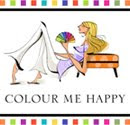have you seen the logo for the 2012 london summer olympics? that awful thing with awful colours just below... well this is it. (official website)
seriously, i had to google it to make sure it wasn’t a prank. it really is hard to believe that a professional designer created this. i don’t think i’ve ever seen such an ugly thing, one no less that apparently sold for £400,000 — about $620,000 US. that’s right.
the controversy for high profile logos is nothing new — but this one beats them all. of course everyone has an opinion, but the lack of any design quality remains something quite obvious to those practicing the trade. hell, even a child can see it as rubbish. (ref. the gardian)
the debate remains why did london pay so much for such a crapy design? is it really what it costs? of course not. logos are usually priced in proportion to the size of the company that commissions it and the exposure it has. when there is a lot at stake, a lot of research and development goes into it. the olympics’ stakes are not as high — good or bad logo, the olympics will always retain their popularity. after all, this logo is only used for the purpose of this two-week event. that sure puts the ridiculous price tag into perspective, doesn’t it?
vancouver 2010
for all the controversy the vancouver 2010 olympic logo received, it now seems trivial in comparison. vancouver organized a logo design contest and paid $25,000 CND to the winner. many talented designers (some whom i know) submitted what i am sure were excellent logos with solid conceptual and strategy. the winner was a young lady who essentially drew an inuksuk (or inunnguaq). everybody thought it lacked creative, was infantile, and had nothing to do with the olympics. furthermore the brief explicitly said to avoid focussing on any one community — such as the natives. hence the controversy.
nothing is extremely creative in that logo, understandably making those who worked really hard on coming up with a solid creative a little bit outraged.
sochi 2014
here lies another controversy: apparently the best ones do not always finish first. for some reason russia commissioned two logos with two large branding agencies — one being a large international player. one of the logo and its brand development is simply outstanding, but it did not win (see it here). totally unfair, i say. instead, this is the one that won:
this logo was designed by interbrand (a large international branding agency, part of the omnicom group — which office, we don’t know) and is the winner, becoming the official sochi 2014 olympic logo. a bit blah wouldn’t you say?
the logo on the left was designed by transfomer studio and is far superior to the one above. alas, it was tossed out by undoubtedly some corporate suits with no taste. the logo on the right is a "candidate city" logo, also superior to the chosen one, designed when a city is considered as a future host of the games, its sole purpose being "to sell" the city to the olympic committee. here you can see more candidate city logos.
back to london
sadly we sometimes have to live with the bad choices of others, and so we’ll have to endure this ugly little thing for a couple of weeks this summer. understanding that the beauty of something will always remain of subjective nature — except when most everybody can agree on it (sort of like brad pitt). as for the outrageous price tag, i say london just has a heck of a lot of money to waste. period.
-
. . . . . . . . . . . . . . . . . . . . .
-
on a parting note
i leave you with some other olympic logos which i think are pretty nice — i particularly love the one for rio 2016 for which you can see how it was created here. do you have a favourite?
–





















